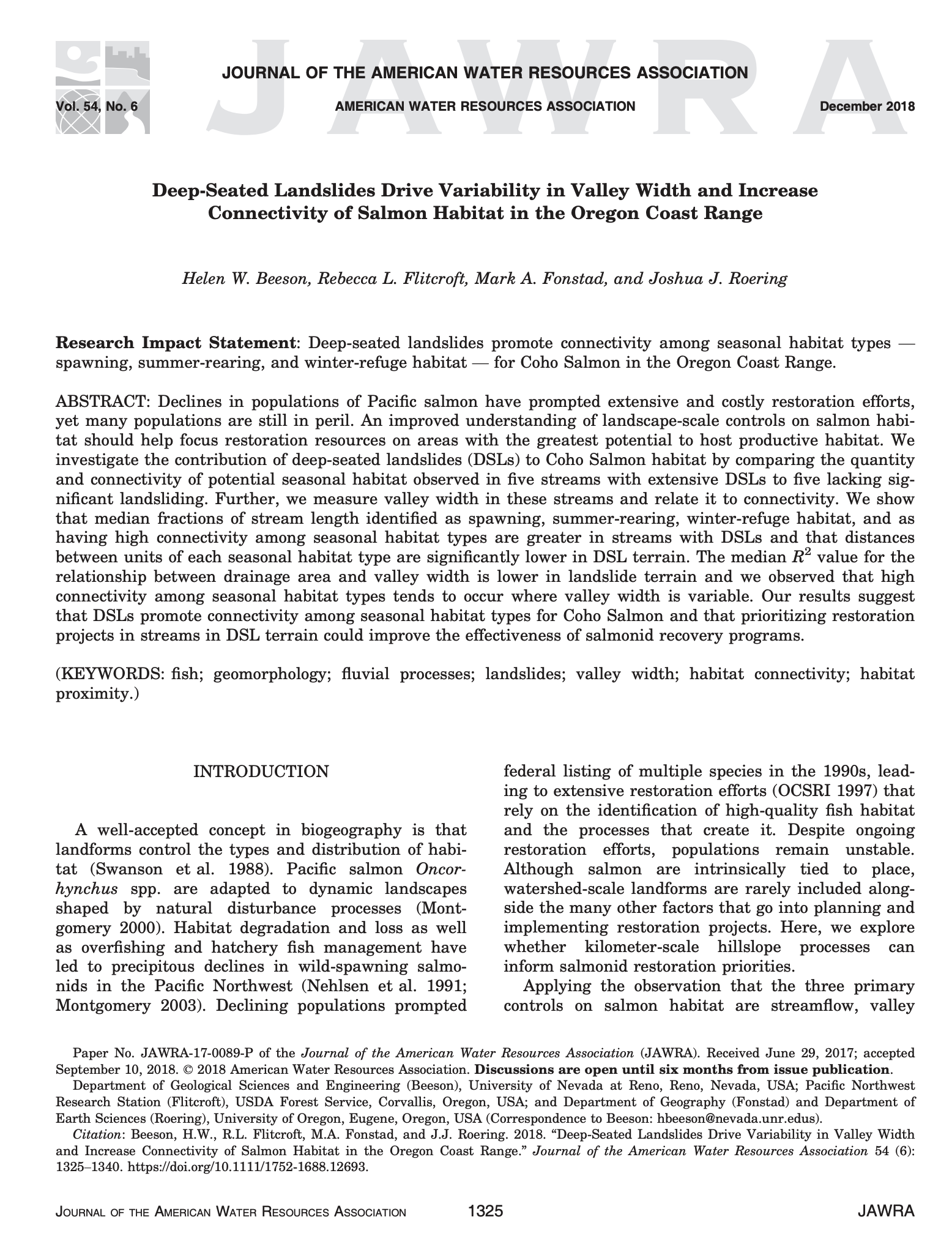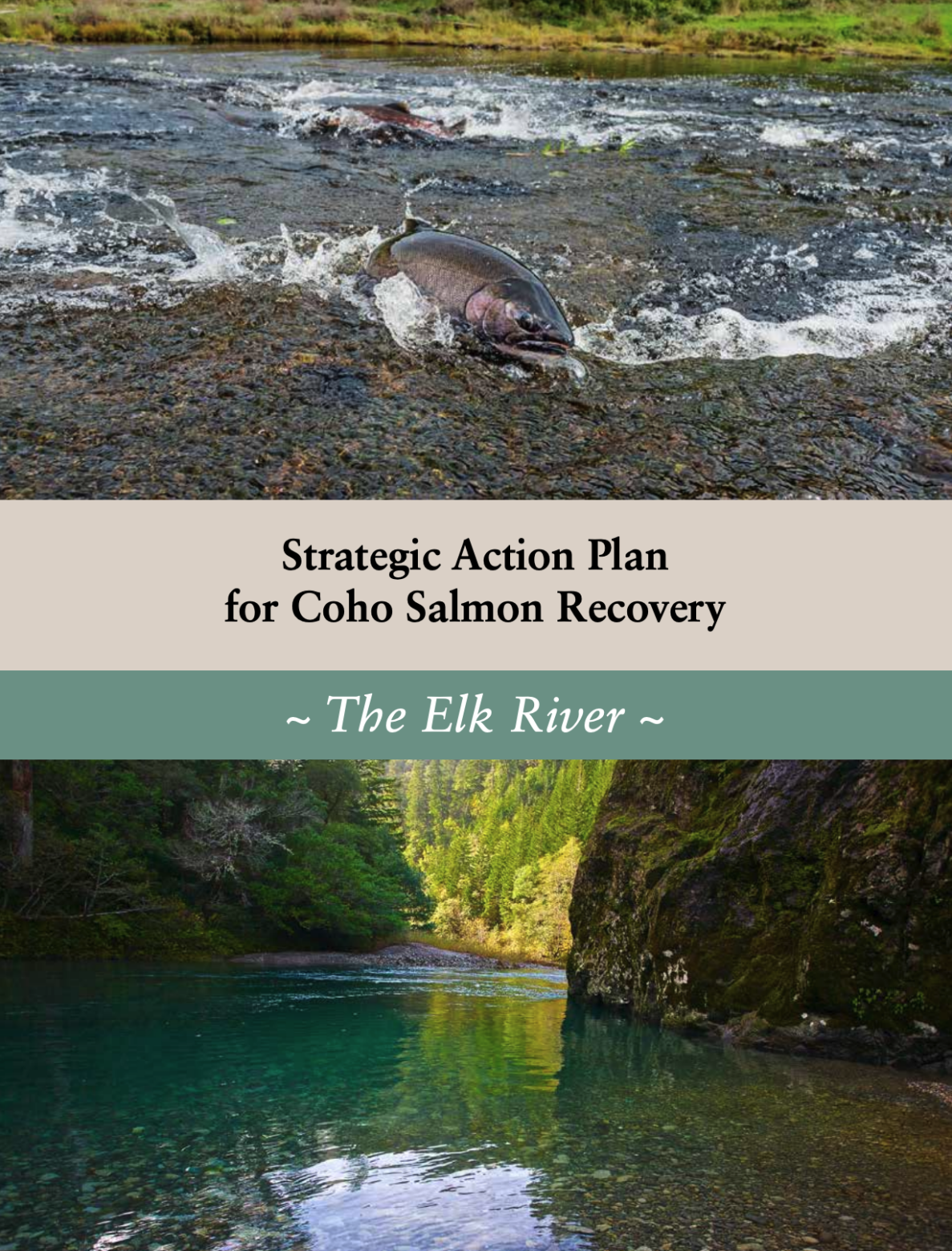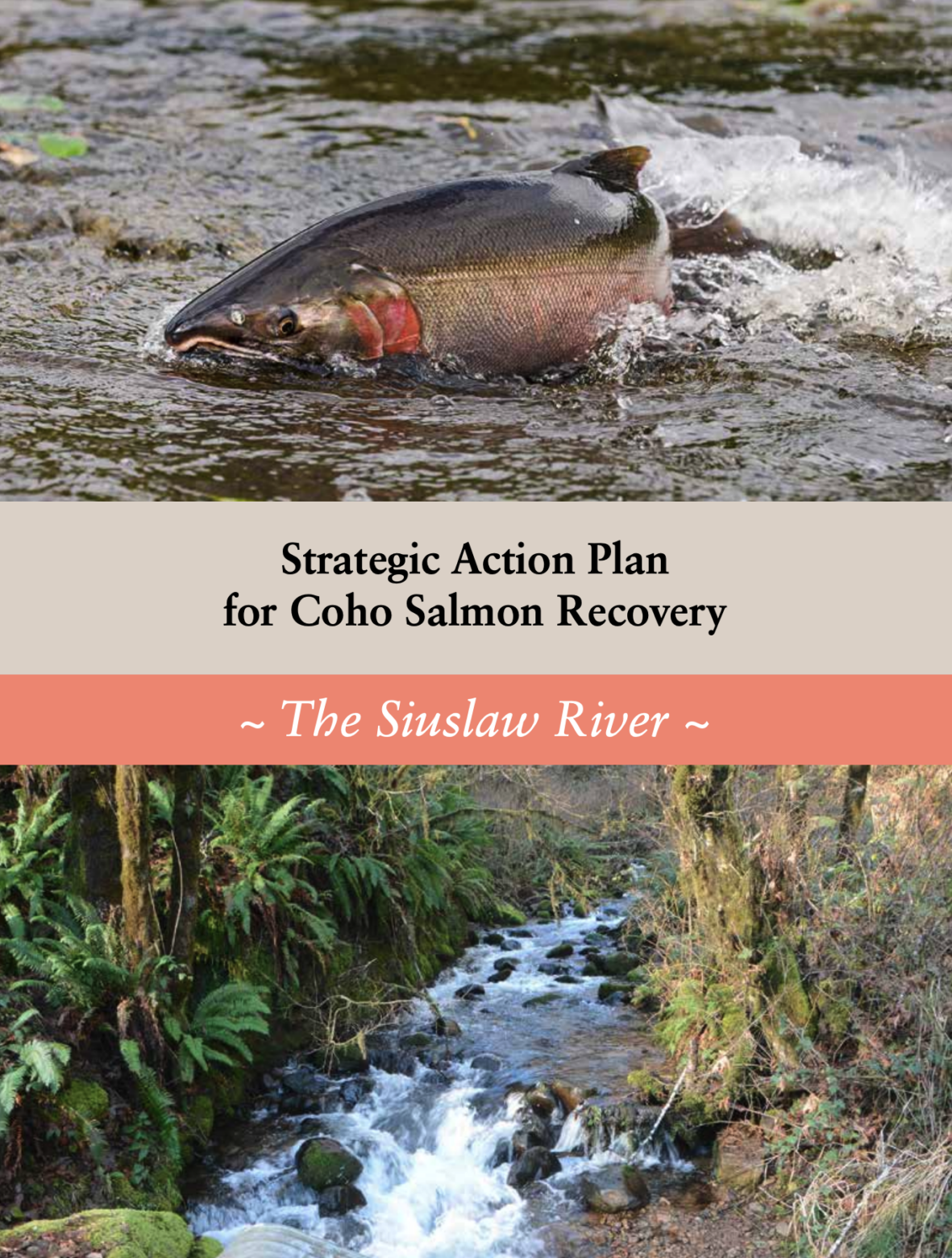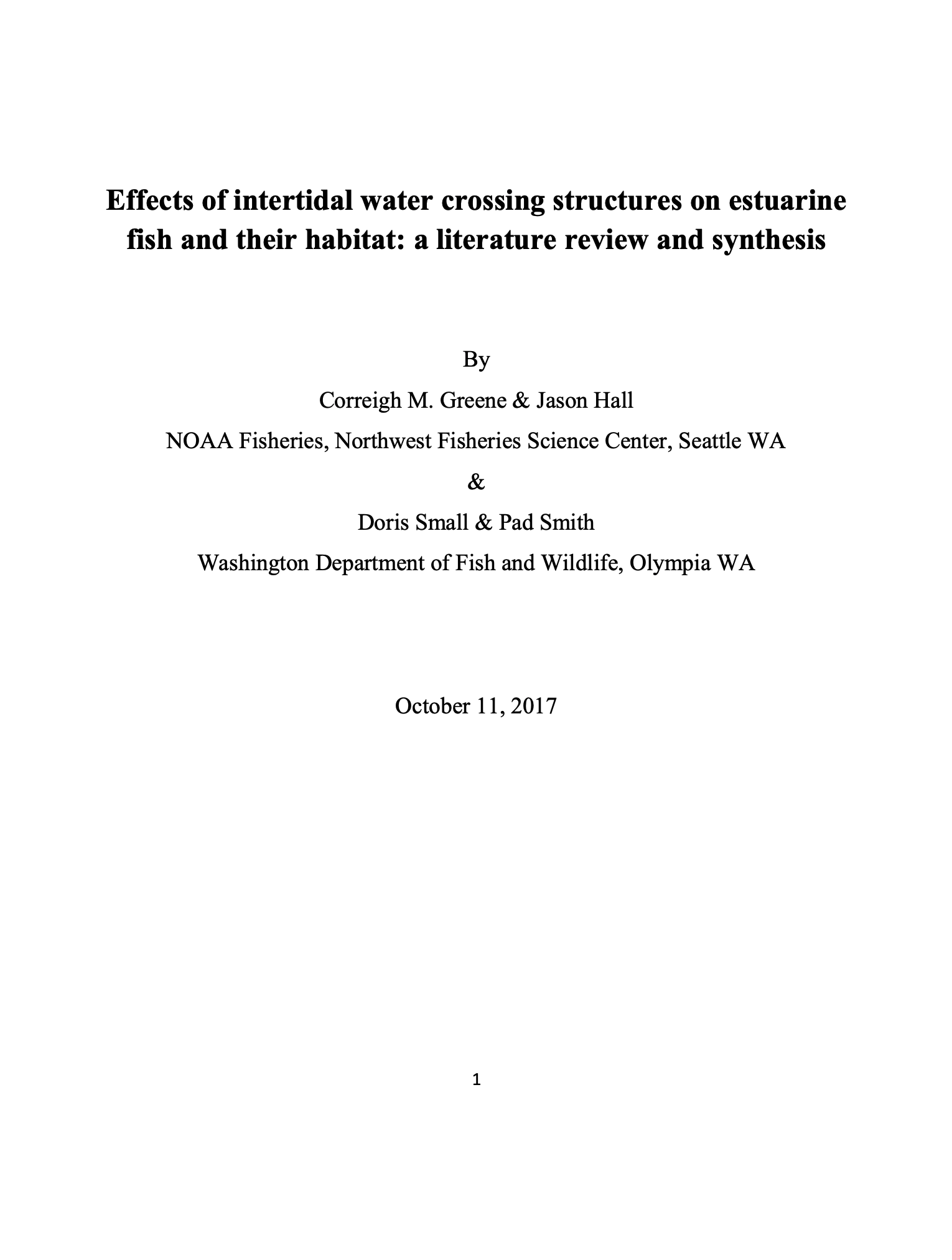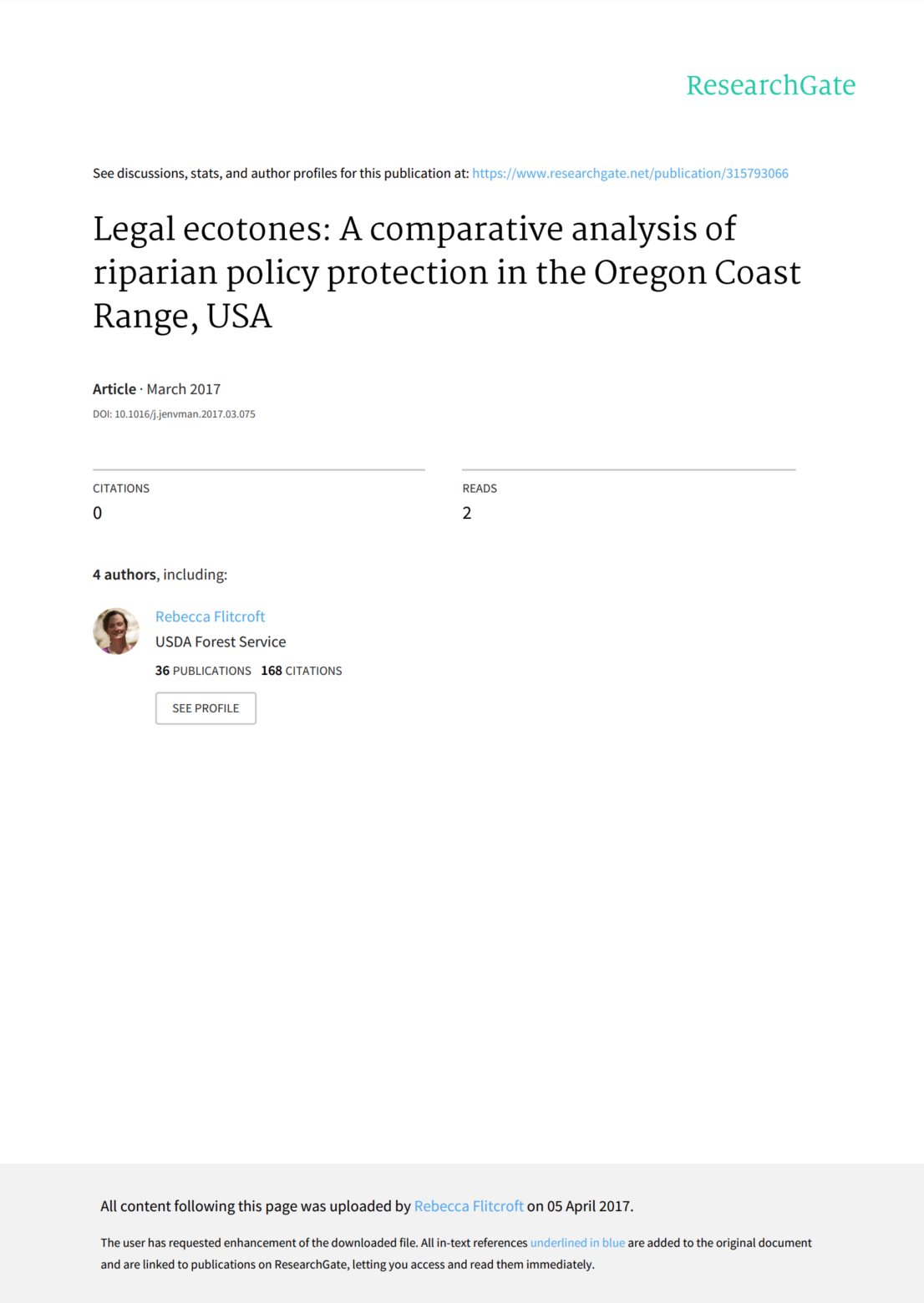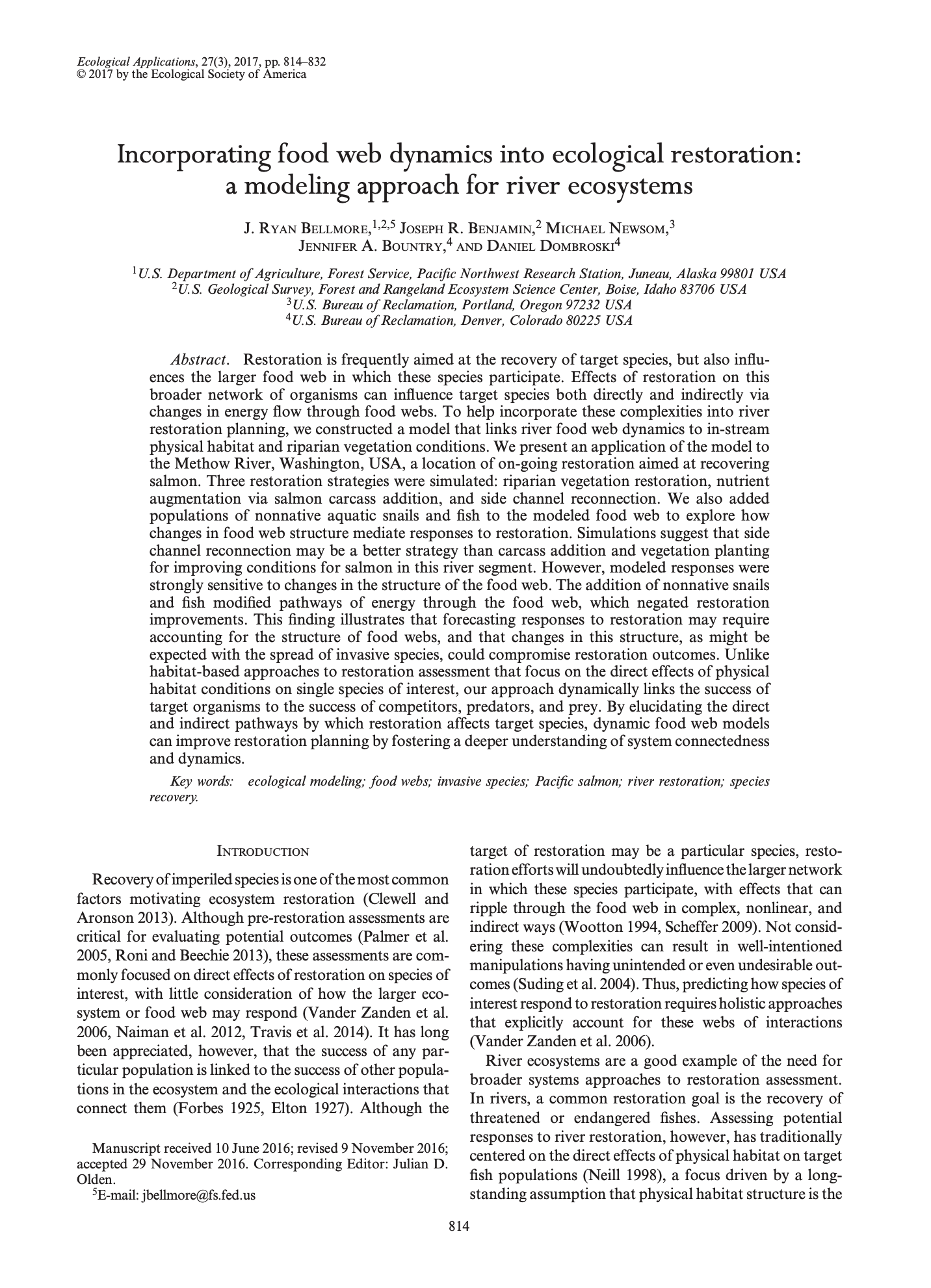Methods to Predict Beaver Dam Occurrence in Coastal Oregon (Petro et al, 2018)
admin2022-06-28T13:41:01+00:00Pools provided by beaver (Castor canadensis) contribute to critical habitat requirements of salmonids in fluvial systems of the Pacific Northwest, therefore more land managers are interested in managing watersheds that include beavers or engaging in beaver-related restoration projects. We evaluated the utility of applying an existing beaver habitat suitability model to better understand beaver dam site characteristics in coastal Oregon, identify optimum dam site locations, and guide future beaver-related restoration efforts. We used a combination of t-tests, Wilcoxon rank sum tests, and a stepwise discriminant function analysis to examine stream habitat associations with field data collected at known and [...]


